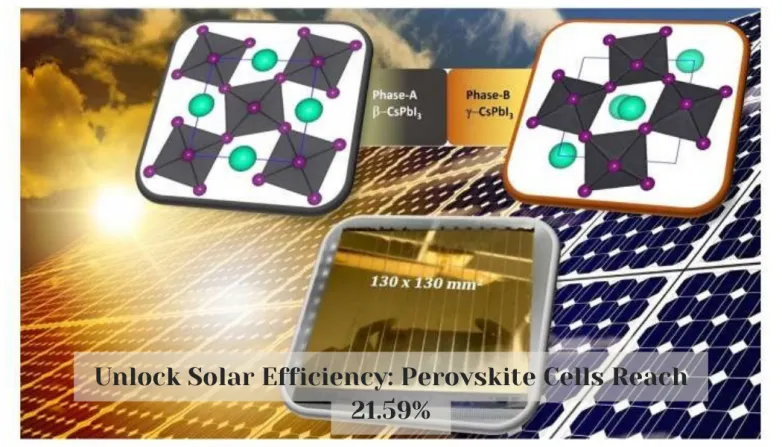Unlock Solar Efficiency: Perovskite Cells Reach 21.59%
- Discover the new technique to simplify the development of efficient and stable perovskite solar cells. Harness the power of visible light with these unique cells, produced at room temperature with less energy than traditional silicon materials. Now with 21.59% power conversion efficiency, and excellent stability, scientists are looking to make commercialization a reality.

Scientists have developed a new technique to simplify the development of efficient and stable perovskite solar cells. These cells have a unique crystalline structure that excels at absorbing visible light and can be produced at room temperature with less energy than traditional silicon materials, making them more affordable and sustainable. The method, developed by a team of international scientists, involves stacking different semiconductor materials, forming a phase-heterojunction. This structure suppresses the transformation to a non-photoactive phase and promotes efficient charge separation and transfer. The device achieved 21.59% power conversion efficiency, among the highest reported for this type of approach, and excellent stability, maintaining more than 90% of the initial efficiency after 200 hours of storage under ambient conditions. The researchers are now looking into making the cells more durable in real-world conditions and scaling them to the size of traditional solar panels. With this approach they hope to reach an efficiency of 25% and make commercialization a reality.
What Technique Improves Perovskite Solar Cell Efficiency?
Technique Improves Perovskite Solar Cell Efficiency:
- The new method involves stacking different semiconductor materials, forming a phase-heterojunction.
- This structure suppresses the transformation to a non-photoactive phase and promotes efficient charge separation and transfer.
- Device achieved 21.59% power conversion efficiency, among the highest reported for this type of approach.
- Excellent stability, maintaining more than 90% of the initial efficiency after 200 hours of storage under ambient conditions.
- Researchers are now looking into making the cells more durable in real-world conditions and scaling them to the size of traditional solar panels.
- Hope to reach an efficiency of 25% and make commercialization a reality.
Also read


